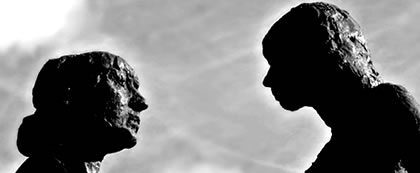 What is the real power of a sermon?
What is the real power of a sermon?This is a question I have asked myself over and over again as I have listened to sermon after sermon - especially during the Jewish high holiday season.
This year, it struck me that the sermon is the one time during the service when the focus is on communication between people, rather than between people and God. The sermon is a break from prayer, and an opportunity for the Rabbi to connect directly with the congregation.
The best sermons are those in which each person in the congregation feels personally addressed - where the Rabbi is somehow able to have a one-on-one conversation with each individual present.
The best sermons are the ones where the listener is absolutely essential - so much so that the sermon would not even be possible without his/her presence.
Focused eye contact and clarity of purpose and message are just a few of the ways the a spiritual leader can connect personally with individuals in the congregation.
This kind of true human connection actually serves to elevate the entire prayer experience.
From the Green Room: Remember, there is no such thing as "public speaking". In any presentation, strive to make each listener feel as though you were having a one-on-one conversation with him/her.






